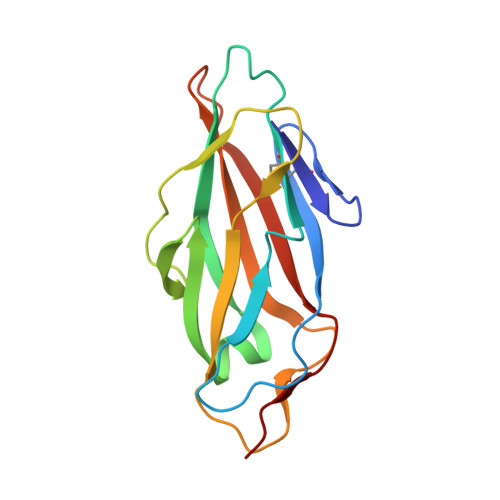Improvement of Aglycone pi-Stacking Yields Nanomolar to Sub-nanomolar FimH Antagonists.
Schonemann, W., Cramer, J., Muhlethaler, T., Fiege, B., Silbermann, M., Rabbani, S., Datwyler, P., Zihlmann, P., Jakob, R.P., Sager, C.P., Smiesko, M., Schwardt, O., Maier, T., Ernst, B.(2019) ChemMedChem 14: 749-757
- PubMed: 30710416
- DOI: https://doi.org/10.1002/cmdc.201900051
- Primary Citation of Related Structures:
6G2R, 6G2S - PubMed Abstract:
Antimicrobial resistance has become a serious concern for the treatment of urinary tract infections. In this context, an anti-adhesive approach targeting FimH, a bacterial lectin enabling the attachment of E. coli to host cells, has attracted considerable interest. FimH can adopt a low/medium-affinity state in the absence and a high-affinity state in the presence of shear forces. Until recently, mostly the high-affinity state has been investigated, despite the fact that a therapeutic antagonist should bind predominantly to the low-affinity state. In this communication, we demonstrate that fluorination of biphenyl α-d-mannosides leads to compounds with perfect π-π stacking interactions with the tyrosine gate of FimH, yielding low nanomolar to sub-nanomolar K D values for the low- and high-affinity states, respectively. The face-to-face alignment of the perfluorinated biphenyl group of FimH ligands and Tyr48 was confirmed by crystal structures as well as 1 H, 15 N-HSQC NMR analysis. Finally, fluorination improves pharmacokinetic parameters predictive for oral availability.
Organizational Affiliation:
Department of Pharmaceutical Sciences, University of Basel, Klingelbergstrasse 50, 4056, Basel, Switzerland.

















